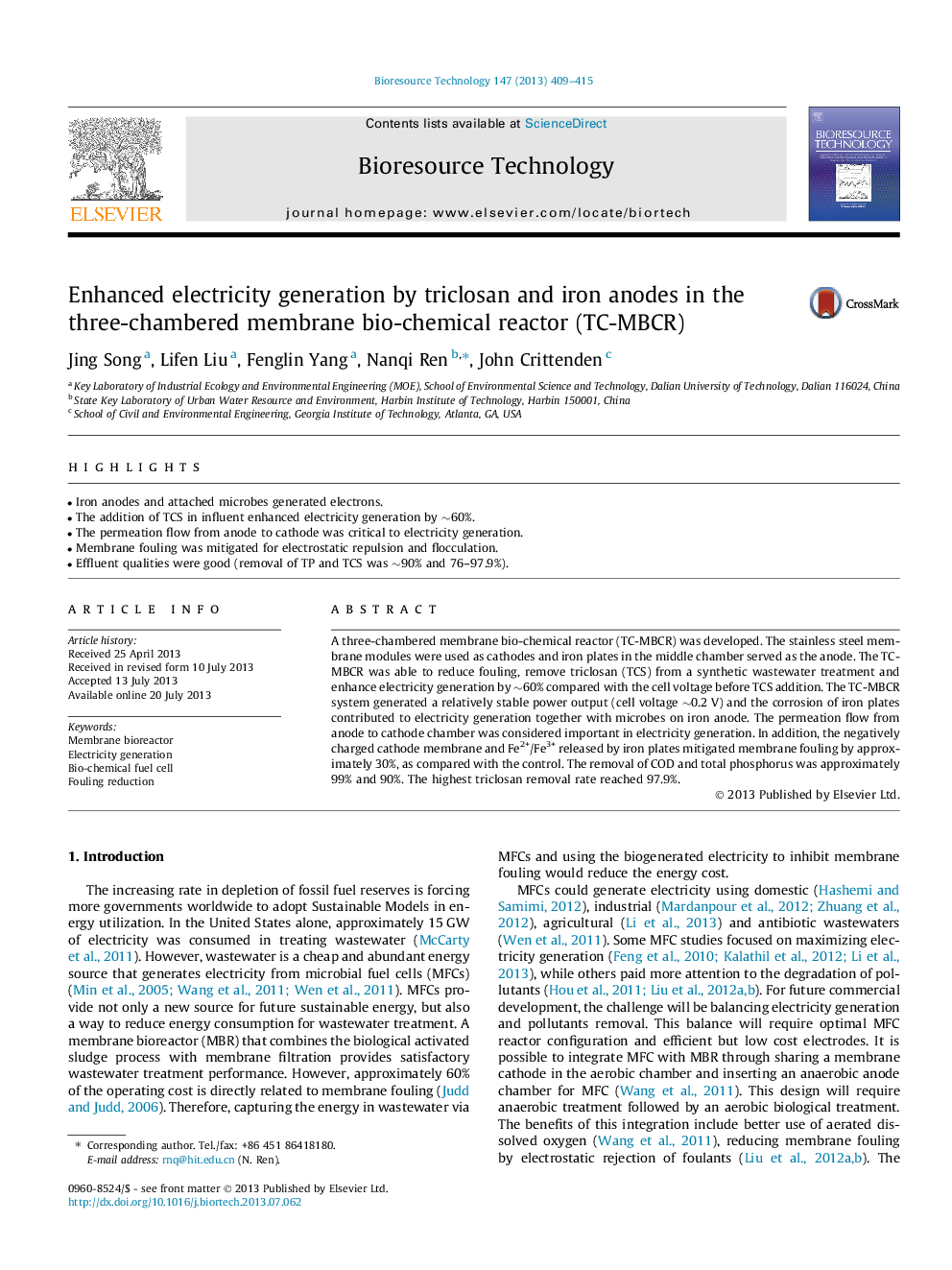| Article ID | Journal | Published Year | Pages | File Type |
|---|---|---|---|---|
| 7080741 | Bioresource Technology | 2013 | 7 Pages |
Abstract
A three-chambered membrane bio-chemical reactor (TC-MBCR) was developed. The stainless steel membrane modules were used as cathodes and iron plates in the middle chamber served as the anode. The TC-MBCR was able to reduce fouling, remove triclosan (TCS) from a synthetic wastewater treatment and enhance electricity generation by â¼60% compared with the cell voltage before TCS addition. The TC-MBCR system generated a relatively stable power output (cell voltage â¼0.2Â V) and the corrosion of iron plates contributed to electricity generation together with microbes on iron anode. The permeation flow from anode to cathode chamber was considered important in electricity generation. In addition, the negatively charged cathode membrane and Fe2+/Fe3+ released by iron plates mitigated membrane fouling by approximately 30%, as compared with the control. The removal of COD and total phosphorus was approximately 99% and 90%. The highest triclosan removal rate reached 97.9%.
Related Topics
Physical Sciences and Engineering
Chemical Engineering
Process Chemistry and Technology
Authors
Jing Song, Lifen Liu, Fenglin Yang, Nanqi Ren, John Crittenden,
